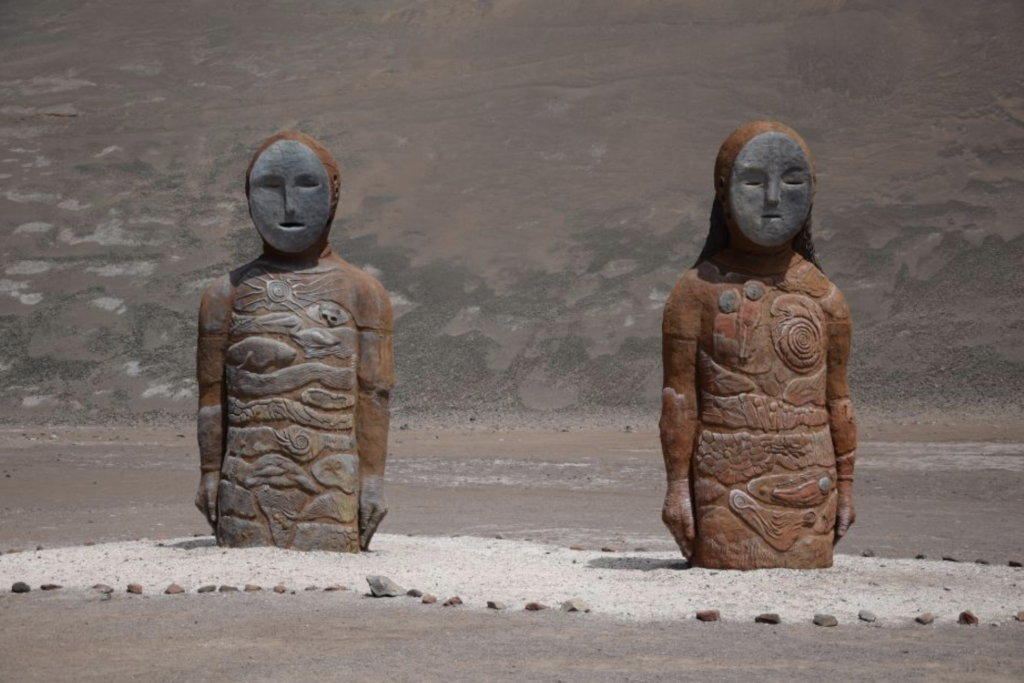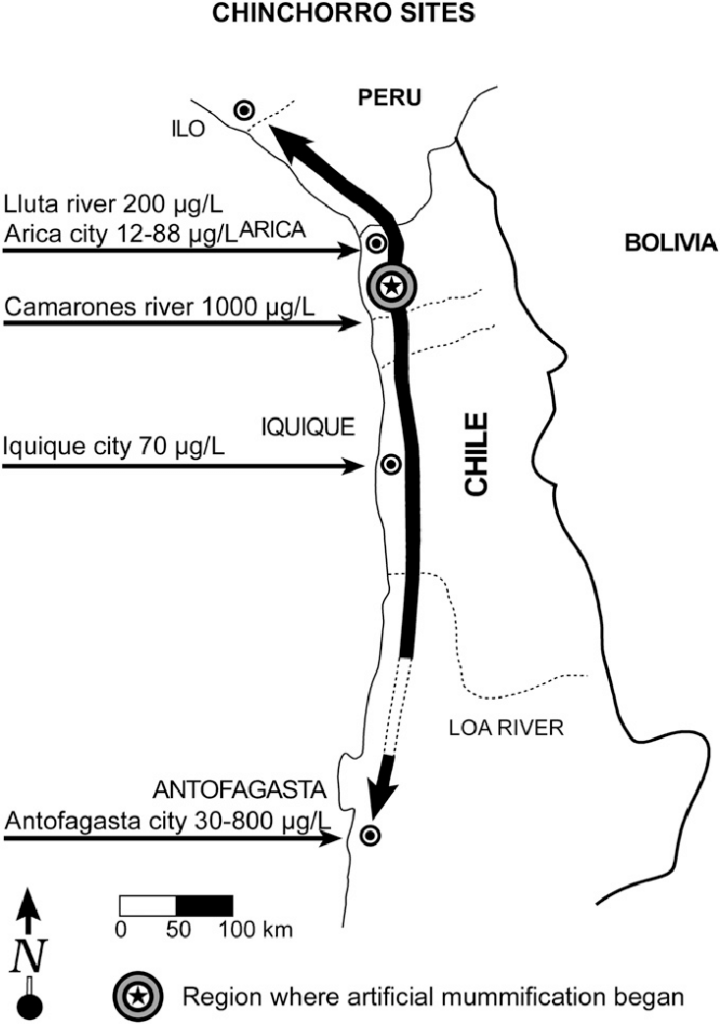The Chinchorro people lived in an ancient, segmentary society – whose earliest sites date to about 7,000 BCE – in the coastal regions of modern-day Chile and southern Peru. They are famous for their elaborate mummification practices spanning 4,000 years across five distinct styles of mummification (CNN Travel, 2019). From these well-preserved mummies, archaeologists have been able to use burial analysis – overviewed in Chapter 5 of the Renfrew reading from this week – to learn about the Chinchorro culture.
First found by German archaeologist Max Uhle in 1917, the Chinchorro mummies have come to be known as the oldest mummies in the world – predating Egyptian mummies by over two millennia. The process of mummification was puzzlingly complex, involving the removal of the body’s skin, flesh, organs, and brain, a reassembly of the bones with twigs, the reapplication of the skin to the body, the painting of an ash paste over the body, and the application of a final layer of either black or ocher paint to the entirety of the mummified body (Britannica, n.d).

These mummies, as well as burial analysis more generally, are able to shine a unique light on the individual, an aspect of the past “seen all too rarely” in archaeology (Renfrew 2018, 157). One of the most important facets of life that burial analysis can reveal about past individuals is social status, or, in the case of the Chinchorro, the relative lack thereof. The Chinchorro mummies reveal signs of a markedly egalitarian culture, with all members of society – men, women, children, the elderly, babies, and even fetuses – receiving the same, elaborate burial. This differs greatly from other ancient cultures that practiced mummification, such as the Egyptians, who reserved the practice for deceased members of the elite (BBC, 2021).
We can also learn a great deal about the diet and lifestyle of the Chinchorro from their mummies. Stable isotope analysis of the hair and human bones of the mummies indicates that nearly 90 percent of Chinchorro diets came from maritime food sources, and the other 10 percent from terrestrial animals and terrestrial plants (ThoughtCo, 2017). Other archaeological data, such as coastal middens and sophisticated fishing tool assemblages, reveal that the Chinchorro people primarily ate fish, coastal birds, and sea mammals.
Further analysis of the mummies can also elucidate the Chinchorro’s relationship with the environment. Many archaeologists argue that Chinchorro mortuary practice was a cultural reaction to environmental forces. For example, in his 2005 journal article on the subject, Bernardo T. Arriaza highlights how arsenic levels present in the Camarones River, a body of water central to the Chinchorro, are “a hundred times the modern safety level” (Arriaza 2005). He thus correlates the high percentage of infant burials found in the early stages of Chinchorro mummification with infants’ greater susceptibility to Arsenic poisoning in order to argue that high arsenic levels initiated the Chinchorro’s cultural practice of mummification.

References:
Hirst, K. Kris. “Chinchorro Culture.” ThoughtCo, March 8, 2017. https://www.thoughtco.com/what-was-the-chinchorro-culture-170502.
Johanson, Mark. “Surprise! The World’s Oldest Mummies Are Not in Egypt.” CNN, May 1, 2019. https://www.cnn.com/travel/article/worlds-oldest-mummies-chile/index.html.
Chambers, Jane. “Living with the World’s Oldest Mummies.” BBC News, October 24, 2021. https://www.bbc.com/news/world-latin-america-58639748.
Lohnes, Kate. “That’s a Wrap: Methods of Mummification.” Encyclopædia Britannica, n.d https://www.britannica.com/story/thats-a-wrap-methods-of-mummification.
Arriaza, Bernardo T. “ARSENIASIS AS AN ENVIRONMENTAL HYPOTHETICAL EXPLANATION FOR THE ORIGIN OF THE OLDEST ARTIFICIAL MUMMIFICATION PRACTICE IN THE WORLD.” Chungara: Revista de Antropología Chilena 37, no. 2 (2005): 255–60. http://www.jstor.org/stable/27802425.
Further Reading:
https://www.smithsonianmag.com/smart-news/worlds-oldest-mummies-get-ct-scan-180961578/
https://www.nationalgeographic.com/travel/article/can-unesco-status-save-the-worlds-oldest-mummies

“He thus correlates the high percentage of infant burials found in the early stages of Chinchorro mummification with infants’ greater susceptibility to Arsenic poisoning in order to argue that high arsenic levels initiated the Chinchorro’s cultural practice of mummification.”
— Other than shining light on the people’s relationship with the environment, what do these mummies say about the Chinchorro’s social structure (i.e., family structure, significance of children within the community)?